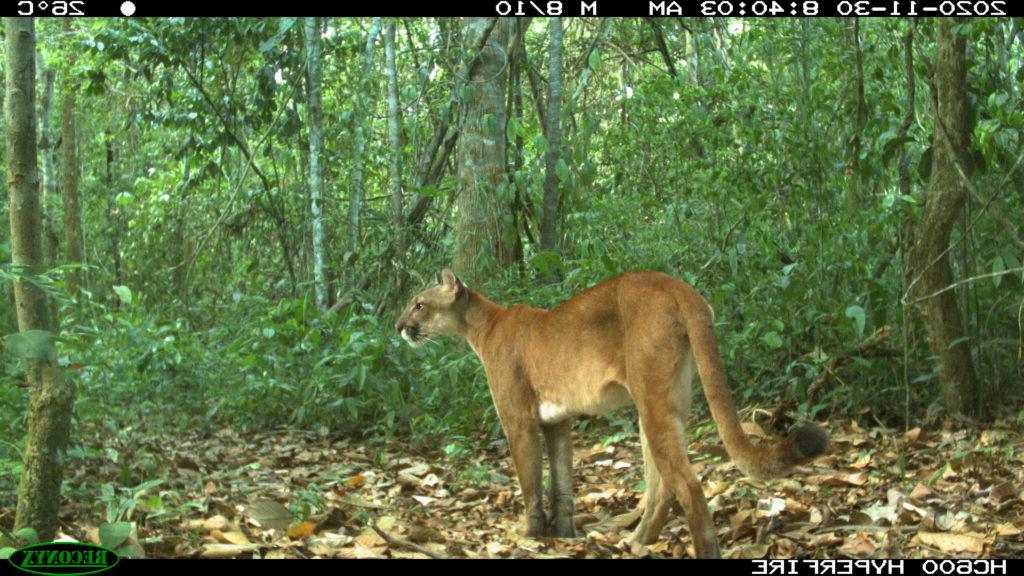Dr. Daniel 罗查 published in Animal Conservation Journal

Amazon Mammals Threatened by Climate Change
Study Reveals Impacts of Savannization on Brazilian Amazon Land Animals
By Kat Kerlin | February 15, 2023
From jaguars and ocelots to anteaters and capybara, most land-based mammals living in the Brazilian Amazon are threatened by climate change and the projected savannization of the region. 这是根据 一项研究 published in the journal Animal Conservation by the 大学 of California, Davis.
[Leia esse artigo em português.]
The study found that even animals that use both forest and 稀树大草原 habitats, such as pumas and giant armadillos, are vulnerable to such changes. It also illustrates how species and lands protected through local conservation efforts are not immune to global climate change.
“We’re losing Amazon forest as we speak,” said lead author Daniel 罗查, who conducted the research as a doctoral student in the UC Davis Department of Wildlife, Fish and Conservation 生物学. “The Amazon’s biodiversity is very susceptible to climate change effects. It’s not just local; it’s a global phenomenon. We cannot stop this just by law enforcement, for example. These species are more susceptible than we realized, and even protected areas can’t protect them as much as we thought.”
什么是稀树化?’
Pristine 稀树大草原 is a unique biome that supports a diverse array of life. But “savannization” here refers to when lush rainforest gives way to a drier, open landscape that resembles 稀树大草原 but is actually degraded forest. Local deforestation and global climate changes in temperature and precipitation favor this conversion along the southern and eastern edges of the Brazilian Amazon.
Arboreal species like monkeys clearly will be impacted by such changes. But the study’s authors wanted to better understand how land-based mammals are expected to fare — especially those who use both forest and 稀树大草原 habitats when they have access to both.
被摄像机拍到
为了研究, the researchers conducted camera trap surveys of land-based mammals in four protected areas of the southern Brazilian Amazon, which is a mixture of rainforest and natural Cerrado, 或稀树大草原. Using statistical models, they quantified how 31 species were affected by 稀树大草原 habitat. They then looked for differences among species known to use mostly rainforest, 稀树大草原, 或者两种栖息地都有.
The results showed that only a few species preferred 稀树大草原 habitat. 罗查 notes that the models were based on pristine — not degraded — 稀树大草原, so the negative effects of savannization among animals will likely be even stronger.
河岸森林, which line the wet edges of rivers and streams, helped buffer the effects of savannization to some extent.
赢家和输家
“不幸的是, there are more losers than winners,罗查说, who is currently an assistant professor at Southern Nazarene 大学 in Oklahoma. “大多数亚马逊物种, when they can choose between good forests and good 稀树大草原, 他们选择森林. That’s true even for species considered ‘generalists,’ which use both habitats. As we lose forests, they suffer, too.”
The results indicate that if climate-driven savannization causes species to lose access to their preferred habitat, it will reduce the ability of even protected areas to safeguard wildlife. The authors say that should be considered when assessing the potential climate-change effects on these species.
The study is co-authored by Rahel Sollmann, 罗查’s former advisor at UC Davis who is now at the Leibniz Institute for Zoo and Wildlife 研究 in Berlin, 德国.
The study was funded by CAPES-Ministry of 教育 in Brazil, the National Geographic Society, Horodas Family Foundation for Conservation 研究, 探险家俱乐部, Alongside Wildlife Foundation, and the Hellman Foundation. This study received logistical support from ICMBio.
媒体资源
媒体联系人:
- Daniel 罗查, UC Davis/Southern Nazarene 大学, dgrocha@ucdavis.edu (罗查 is available to conduct interviews in English or Portuguese.)
- Kat Kerlin, UC Davis 太阳城官网 and Media Relations, 530-750-9195, kekerlin@ucdavis.edu
经许可使用.


